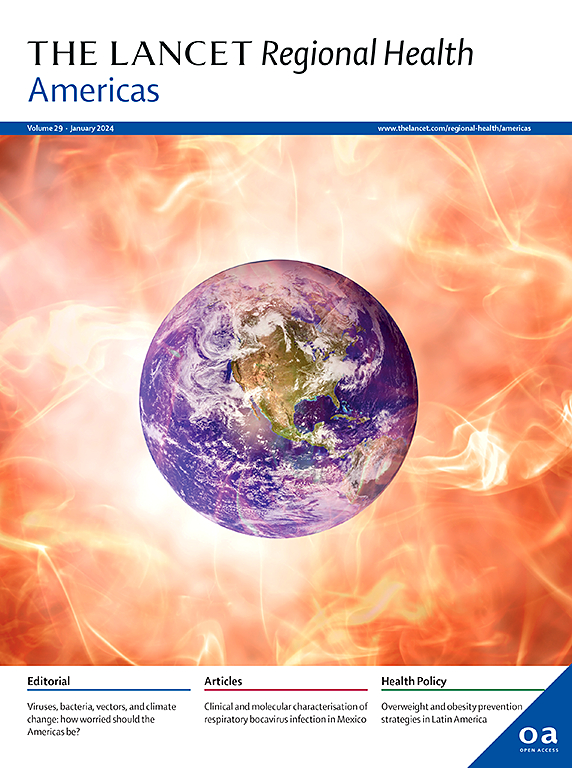美国老年人计量吸入器的使用和可及性及可持续替代品:一项基于人群的研究
IF 7
Q1 HEALTH CARE SCIENCES & SERVICES
引用次数: 0
摘要
要实现《巴黎协定》将全球气温上升限制在1.5-2°C以下的目标,医疗保健部门必须在2050年前实现净零排放。这就需要采取多种战略,包括用更环保的干粉吸入器和软雾吸入器取代碳密集型计量吸入器。虽然几个欧洲国家已经成功地实现了这一转变,但在美国,人们对MDI的使用模式和采用可持续替代品的障碍仍然知之甚少。因此,我们评估了美国老年人吸入器的使用、成本和保险覆盖率。方法使用100%按服务收费的医疗保险数据(2008-2022年),我们按器械类型和药物类别描述了使用趋势和成本,包括吸入皮质类固醇[ICS]和短效/长效β激动剂[S/LABA]。使用COVERAGE Search数据库,我们从美国10个大州的D部分计划中提取了处方数据,并描述了保险覆盖范围、处方层级放置(按成本分类药物)、事先授权(需要保险公司批准覆盖)和步骤治疗(需要低成本药物的初步试验)。结果:10,494,068名老年人(平均年龄74±7岁;男性38%;85%为白色),51%为mdi。在这些mdi中,88%是SABA和ICS。SABA MDIs的免赔期自付费用中位数为3-9美元,dpi /SMIs为42-49美元,ICS MDIs为3-4美元,dpi /SMIs为3-116美元。在2530年的D部分计划中,分别只有18%和50%覆盖了SABA和ICS dpi。在覆盖的计划中,70%将dpi用于SABA或ICS的成本较高,其中32-58%需要事先授权或分步治疗。mdis,主要是SABA或ICS,占美国老年人吸入器的一半以上。大多数保险计划不包括SABA/ICS的可持续替代方案。当被覆盖时,会产生额外的审批步骤和/或更高的患者费用。正如欧洲国家所表明的那样,需要多层次的努力来确保获得负担得起的可持续替代品。本研究的资金由美国国立卫生研究院和美国国立老龄化研究所(1R01AG060232-01A1)提供。本文章由计算机程序翻译,如有差异,请以英文原文为准。
Utilization and access to metered-dose inhalers and sustainable alternatives among older adults in the United States: a population-based study
Background
Attaining the Paris Agreement goal of limiting global temperature rise to below 1.5–2 °C requires the healthcare sector to achieve net-zero emissions by 2050. This necessitates adopting diverse strategies, including replacing carbon-intensive metered-dose inhalers (MDIs) with more environmentally sustainable dry powder inhalers (DPIs) and soft mist inhalers (SMIs). While several European countries have successfully made this transition, patterns of MDI use and barriers to adopting sustainable alternatives in the United States remain poorly understood. Thus, we assessed inhaler utilization, costs, and insurance coverage among U.S. older adults.
Methods
Using 100% fee-for-service Medicare data with pharmacy benefit (2008–2022), we described utilization trends and costs by device types and drug classes, including inhaled corticosteroids [ICS] and short-/long-acting beta-agonists [S/LABA]. Using the COVERAGE Search database, we extracted formulary data from Part D plans in 10 large US states and described insurance coverage, formulary tier placement (categorizing drugs by costs), prior authorization (requiring insurer approval for coverage), and step therapy (requiring initial trial of lower-cost drugs).
Findings
Of 160,845,280 inhalers dispensed to 10,494,068 older adults (mean age 74 ± 7 years; 38% male; 85% White), 51% were MDIs. Of these MDIs, 88% were SABA and ICS. Median deductible-phase out-of-pocket costs were $3–9 for SABA MDIs vs. $42–49 for DPIs/SMIs and $3–4 for ICS MDIs vs. $3–116 for DPIs/SMIs. Only 18% and 50% of 2530 Part D plans covered SABA and ICS DPIs, respectively. Among the covering plans, >70% placed DPIs for SABA or ICS in higher-cost tiers, with 32–58% requiring prior authorization or step therapy.
Interpretation
MDIs, primarily as SABA or ICS, accounted for over half of inhalers dispensed to US older adults. Most insurance plans excluded sustainable alternatives for SABA/ICS. When covered, additional approval steps and/or higher patient costs were posed. Multi-level efforts are needed to ensure affordable access to sustainable alternatives, as demonstrated in European countries.
Funding
Funding for this study was provided by the National Institutes of Health and the National Institute on Aging (1R01AG060232-01A1).
求助全文
通过发布文献求助,成功后即可免费获取论文全文。
去求助
来源期刊

Lancet Regional Health-Americas
Multiple-
CiteScore
8.00
自引率
0.00%
发文量
0
期刊介绍:
The Lancet Regional Health – Americas, an open-access journal, contributes to The Lancet's global initiative by focusing on health-care quality and access in the Americas. It aims to advance clinical practice and health policy in the region, promoting better health outcomes. The journal publishes high-quality original research advocating change or shedding light on clinical practice and health policy. It welcomes submissions on various regional health topics, including infectious diseases, non-communicable diseases, child and adolescent health, maternal and reproductive health, emergency care, health policy, and health equity.
 求助内容:
求助内容: 应助结果提醒方式:
应助结果提醒方式:


